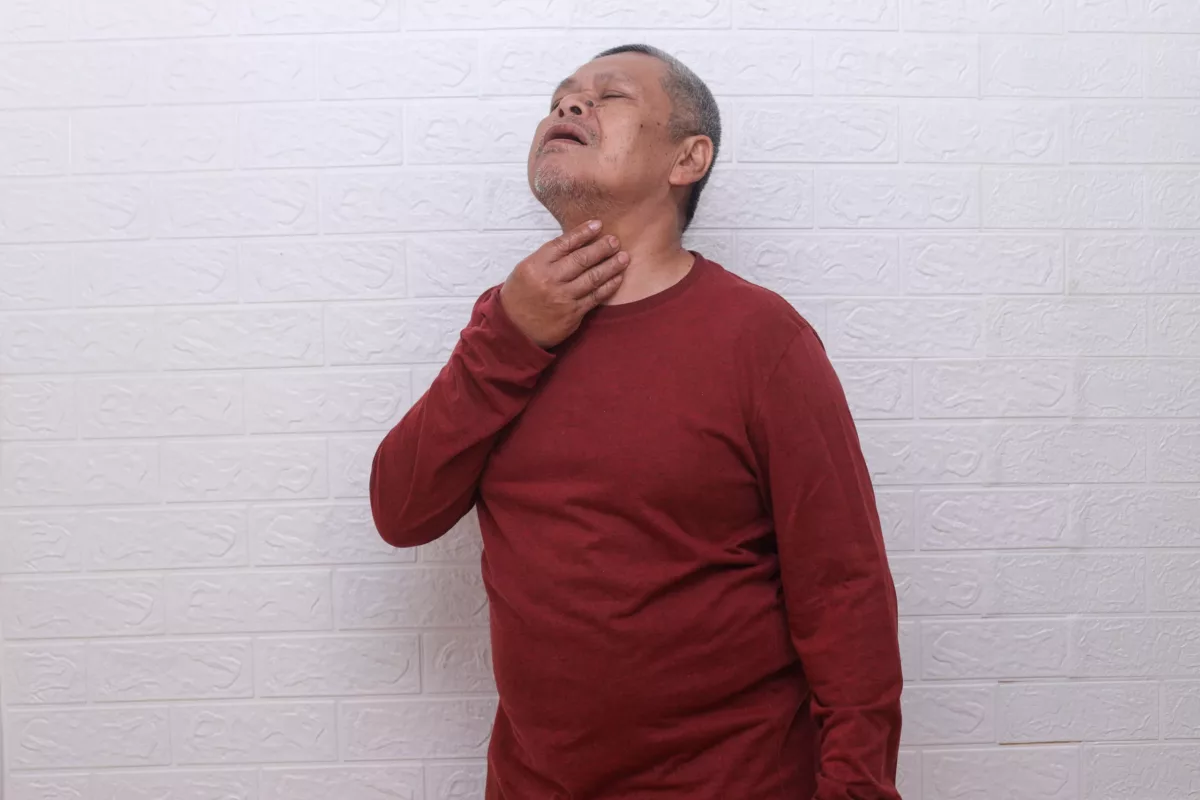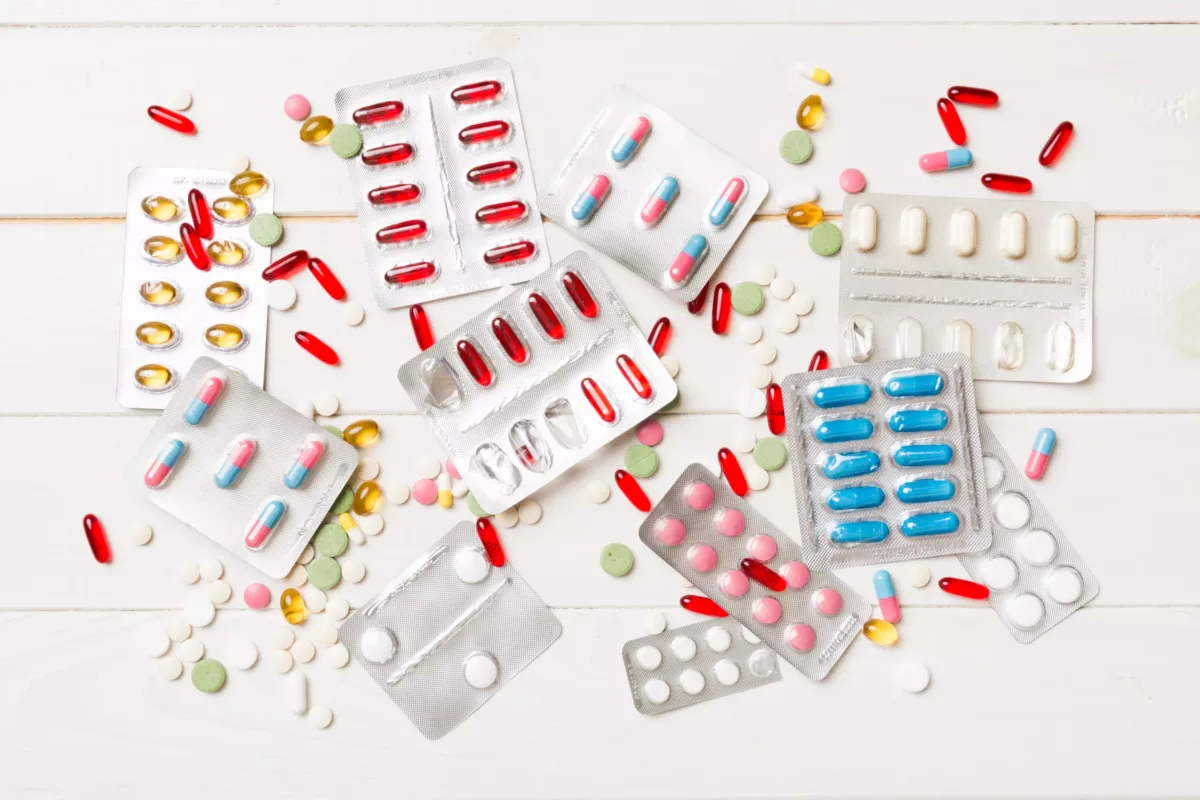A swallowing health condition that negatively affects the esophagus (the tube that connects the mouth with the stomach) is called achalasia. It often happens due to damage to the nerves that control the esophagus muscles. They help squeeze food and liquid into the stomach. In people with achalasia, food may begin to collect in the esophagus or return up into the mouth (sometimes). Commonly, fermented food can taste bitter.
However, this condition happens quite rarely, and it is often mistaken for gastroesophageal reflux disease (also called GERD). The only difference between these conditions is that the food returns from the esophagus in people with achalasia and from the stomach in those who suffer from GERD.
Unfortunately, this condition cannot be cured. In other words, once the esophagus muscles are damaged, they cannot work properly again. However, there are some treatments that can lessen the symptoms. For example endoscopy, minimally invasive therapy, surgery, and others.
Symptoms
This condition often develops gradually, and symptoms do not appear in the early stages. However, when achalasia advances, it may cause the following symptoms. Examples include:
- Dysphagia (swallowing problems)
- The swallowed saliva or food flows back into the throat
- Heartburn
- Belching
- Chest pain
- Cough, especially during nighttime
- Pneumonia
- Weight loss
- Vomiting
If any of the previous symptoms occur, do not hesitate to see a doctor.
Causes
Experts do not fully understand why achalasia happens. However, they think damage or loss of esophagus nerve cells may cause the disease. Generally, there are multiple theories about what causes achalasia. These include viral infections and autoimmune conditions, among others. In rare cases, this esophagus condition may be caused by an inherited genetic disorder or infection.
Risk Factors
There are some factors that may increase your risk of developing achalasia. Check below for some examples:
- Age – This condition may develop in anyone but it mostly is diagnosed in people between 25 and 60 years old.
- Medical conditions – The risk of achalasia increases significantly in people with adrenal insufficiency, allergic disorders, Allgrove syndrome (a rare autosomal recessive genetic condition), Chagas disease, viral infections, and others.
- Obesity
- Smoking
- Cancer treatments (such as radiation therapy)
- Cancer near the lower esophageal sphincter
This document does not contain all possible risk factors for achalasia. For more details, consult with your healthcare professional.
Diagnosis
Frequently, this condition is misdiagnosed or overlooked because it causes symptoms similar to other health conditions (such as digestive disorders). Commonly, to confirm the condition, physicians perform the following tests. Examples include:
- Esophageal manometry – This is a specific test used to measure muscle contractions in the esophagus while you swallow. Moreover, it can measure how well the lower esophageal sphincter opens.
- An upper digestive system X-ray – This imaging test is often performed after drinking a chalky liquid (barium). It coats the digestive tract lining and fills digestive organs. This substance allows doctors to get more detailed images of the digestive system (including the stomach, upper intestine, and others). This test also can show digestive system blockages.
- Upper endoscopy – This test involves a small and flexible tube with a lighted camera on the end that is used to examine the digestive system for irregularities linked with achalasia. In addition, during an endoscopy, physicians may get a small sample of affected tissue to test in the laboratory.
- Functional luminal imaging probe (FLIP) technology – This is a new test used to confirm achalasia and exclude other digestive system conditions that cause similar symptoms.
Treatment
The goal of the treatment is to relax or stretch open the lower esophageal sphincter, which allows food and liquids to move more easily through the digestive tract. However, doctors recommend different treatments for people with achalasia, depending on multiple factors. These include existing health problems, age, the severity of the condition, and others. Check below for some treatments often prescribed by doctors:
Nonsurgical Options
- Pneumatic dilation – An outpatient treatment that involves a balloon inserted into the center of the esophageal sphincter and then inflated. It helps to widen the opening of the esophageal sphincter. Some people may need this treatment multiple times if the esophageal sphincter does not stay open. In some cases, people get this treatment within 5 years.
- OnabotulinumtoxinA (Botox) – This is an injection used to relax the muscles of the esophagus. It is injected directly into the esophageal sphincter, usually during an endoscopy. Usually, people need multiple injections. Unfortunately, if you get multiple onabotulinumtoxinA injections, it may make it difficult to perform surgery later if required. Generally, doctors prescribe this medicine when surgery or pneumatic dilation is not an option.
- Medicines – The following medications are also recommended when pneumatic dilation or surgery cannot be performed. Doctors often prescribe Nitroglycerin or Nifedipine, which should be taken before eating. However, previous medicines can cause serious negative effects. Do not take them without a doctor’s approval.
Surgery
- Heller myotomy – During this procedure, surgeons cut the lower end of the esophageal sphincter, allowing food to pass more easily into the stomach. Usually, doctors recommend a minimally invasive procedure called a laparoscopic Heller myotomy, but sometimes, people develop GERD after this treatment. To reduce the risk of GERD, surgeons often perform an additional procedure called fundoplication, in which they make an anti-reflux valve at the top of the stomach. It helps prevent stomach acid from going backward into the esophagus.
- Peroral endoscopic myotomy (POEM) – During this procedure, surgeons use an endoscope that is inserted down the throat through the mouth to make an incision in the esophagus lining. Thereafter, they perform a Heller myotomy. In most cases, POEM is performed along with fundoplication to reduce the risk of GERD.
Frequently Asked Questions
What is the cause of Achalasia syndrome?
Healthcare providers do not fully understand why achalasia happens. However, they think this esophagus condition is linked to other health problems including viral infections, certain genetic disorders, autoimmune diseases, and others.
What should people with achalasia eat?
These include soft-cooked, mashed, or pureed foods (including soups, smoothies, crock-pot meals, and others). Furthermore, smoothies and protein are very helpful when appetite or intake is low. For more details, discuss it with your doctor.
Will Achalasia ever go away?
Unfortunately, there is no way to cure the condition. That’s why the treatment goal is to lessen the symptoms and improve your quality of life. Moreover, the treatment often prescribed by doctors helps prevent serious complications of achalasia. These include aspiration, choking, malnutrition, esophageal cancer, and others. This article does not contain all possible achalasia complications. If you have additional questions, do not hesitate to ask your healthcare provider.




